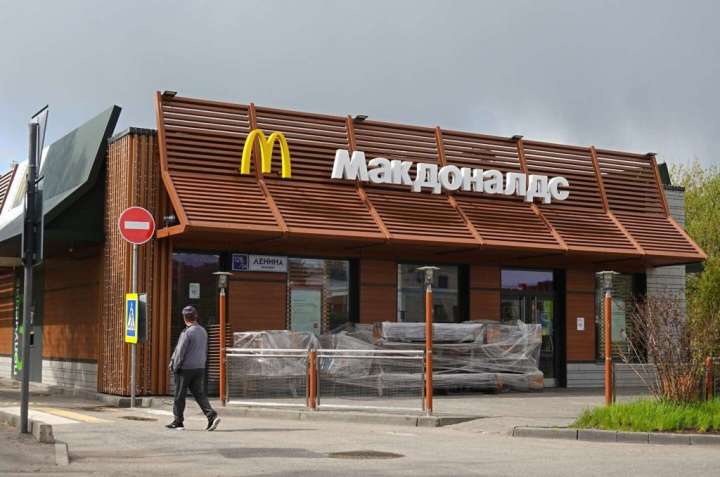It took McDonald’s 14 years to open its first restaurant in Russia, and it took three decades for the fast-food giant to become an integral part of Russian life in hundreds of communities across 11 time zones.
In leaving Russia, McDonald’s dismantles a 30-year relationship

Those 800-plus restaurants will no longer be branded as McDonald’s, nor will they be allowed to use the company’s logo or menu. McDonald’s said the company would retain its trademarks in Russia, even as squatters and speculators began filing applications to trademark names and logos that are designed to mimic the iconic American brand. A spokesman for McDonald’s declined to provide a more detailed timeline for the transaction.
“This was not an easy decision, nor will it be simple to execute given the size of our business and the current challenges of operating in Russia. But the end-state is clear,” Kempczinski wrote in his letter. “What makes this especially hard is the dedication of our McDonald’s employees and suppliers in Russia, whose commitment to the brand set a new standard for customer service in the region.”
The first McDonald’s in Russia opened in January 1990, nearly 14 years after the idea was first broached during the 1976 Summer Olympics in Montreal. The country was still under Soviet control. On Pushkin Square in Moscow, not far from the Kremlin, the restaurant was, at the time, the largest in the chain. It covered 23,680 square feet and had seating for 700 customers on multiple levels.
“McDonald’s has built restaurants from Seattle to Singapore, but completing the first of 20 planned outlets in the Soviet Union was a triumph over the country’s endless red tape and ancient infrastructure,” a Time magazine correspondent wrote of the opening.
Because the first McDonald’s accepted rubles, the restaurant was an instant hit with Russians. Tens of thousands of people stood in long lines to get their first taste of a “Big Mak.” The store sold “34,000 burgers on its first day, smashing the burger chain’s previous first-day record of 9,100,” the Moscow Times reported in a 30-year retrospective.
McDonald’s, however, did more than open hundreds of restaurants during its three-plus decades in Russia. It built an infrastructure and a supply chain. It developed a workforce of more than 60,000 workers to staff its restaurants. The company, in short, became a part of Russia’s cultural life, a fact underscored by the long lines that formed outside McDonald’s locations on March 8, the day the chain announced it would temporarily close its restaurants in the country.
The company invested heavily in a country known at the time for its shortages. McDonald’s brought in agronomists to help farmers grow nonnative potatoes. It introduced bakers from Canada, the United States and Europe to develop baking systems. The company even flew in meat experts to help Russian ranchers raise cattle. By 1999, between 75 and 80 percent of the company’s raw materials “were being sourced from more than 100 local producers in Russia,” according to a 2010 report by the IBS Center for Management Research.
Kempczinski acknowledged the tight relationship with Russians in his letter.
“Russians welcomed McDonald’s into their daily lives, their families, and their friendships. McDonald’s became an integral part of Russia, serving millions of Russians every day,” he wrote. “From Kaliningrad to St. Petersburg, Moscow to Nizhny Novgorod all the way out to Vladivostok, Russians embraced McDonald’s. And we embraced Russia.”
The CEO said McDonald’s would continue to pay its employees in Russia while restaurants are closed. The chain also said it will work to ensure all employees have a job with the new owner.
McDonald’s was in a better position than other fast-food companies to shut down operations in Russia. Other chains rely heavily on franchisees to operate within Russia’s borders. McDonald’s, on the other hand, owns 84 percent of the locations in the country. According to a corporate filing, McDonald’s restaurants in Ukraine and Russian accounted for 9 percent of the company’s 2021 revenue, because the chain owns so many of the outlets.
Because of its exit from Russia, McDonald’s expects to record a charge to the company of between $1.2 billion and $1.4 billion, according to news release issued Monday.
In his letter, Kempczinski did not rule out a return to Russia, though he didn’t lay out specifics on what would have to change for McDonald’s to return.
“Thus, let us not end by saying, ‘goodbye,’” the CEO wrote. “Instead, let us say as they do in Russian: До новой встречи. ‘Until we meet again.’”






